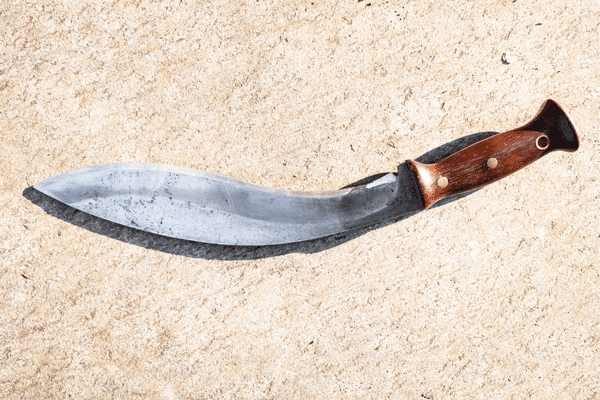Picking the Perfect Survival Knife: 7 Factors You Can't Ignore.
Your Key to Survival Starts with the Right Blade.
A survival knife is one of the most important tools you can have when you're venturing into the wilderness. It can be used for a variety of tasks, from chopping wood and building a shelter to preparing food and defending yourself from wild animals.With so many different survival knives on the market, it can be tough to know which one is right for you. That's why we've put together this guide to help you choose the perfect survival knife for your needs.
 |
7 Things to Consider When Choosing a Survival Knife
- Blade Material
The blade material is one of the most important factors to consider when choosing a survival knife. The most common blade materials are stainless steel and carbon steel.
Stainless steel is a good choice for survival knives because it is resistant to corrosion and rust. However, stainless steel blades can be more difficult to sharpen than carbon steel blades.
Carbon steel is another good choice for survival knives because it is strong and durable. However, carbon steel blades are more susceptible to corrosion and rust than stainless steel blades.
- Blade Shape
The blade shape of your survival knife will also affect its performance. The most common blade shapes are drop point, clip point, and tanto.
Drop point blades are a good all-purpose blade shape. They are good for chopping, slicing, and piercing.
Tanto blades are a good choice for survival knives because they are strong and durable. Tanto blades are also good for chopping and piercing.
- Blade Size
The blade size of your survival knife is important to consider, as it will affect the weight and portability of the knife. A good rule of thumb is to choose a knife with a blade that is between 4 and 6 inches long.
- Handle Material
The handle material of your survival knife is important to consider, as it will affect the grip and comfort of the knife. The most common handle materials are wood, plastic, and rubber.
Wood handles are a good choice for survival knives because they are durable and comfortable to grip. However, wood handles can be more susceptible to cracking and warping than plastic and rubber handles.
Plastic handles are another good choice for survival knives because they are lightweight and durable. However, plastic handles can be more slippery than wood and rubber handles.
Rubber handles are a good choice for survival knives because they provide a good grip and are comfortable to hold. However, rubber handles can be less durable than wood and plastic handles.
- Sheath
The sheath of your survival knife is important to consider, as it will protect the knife from damage. The sheath should be made of a durable material, such as leather or kydex.
- Price
The price of survival knives can vary widely. It is important to set a budget before you start shopping for a survival knife.
- Your Needs
The most important thing to consider when choosing a survival knife is your needs. What will you be using the knife for? What type of environment will you be using the knife in?
Once you have considered all of these factors, you can start shopping for a survival knife.
Tips for Choosing a Survival Knife
- Handle the knife before you buy it: Make sure that the knife is comfortable to hold and that the grip is secure.
- Ask about the warranty: Make sure that the knife is backed by a good warranty.
- Check the balance of the knife: The knife should be well-balanced so that it is easy to control.
- Test the blade of the knife: Make sure that the blade is sharp and that it can hold an edge.
Caring for Your Survival Knife
Once you have chosen a survival knife, it is important to take care of it. Here are some tips for caring for your survival knife:
- Keep the knife clean and dry.
- Sharpen the knife regularly.
- Oil the knife regularly to prevent rust and corrosion.
- Store the knife in a safe place.
Conclusion
A survival knife is a versatile tool that can be used for a variety of tasks in an emergency situation. When choosing a survival knife it is important to consider your individual needs and preferences, such as the type of environment you will be using the knife in, the types of tasks you will be using it for, and your budget.
Once you have chosen a survival knife, it is important to learn how to use it safely and effectively. Practice using your knife in different situations so that you are comfortable using it when you need it most.
Here is a tip: consider taking a survival knife course to learn how to use your knife safely and effectively in a variety of situations.
No matter what survival knife you choose, make sure that you are confident in your ability to use it safely and effectively. A survival knife is a valuable tool, but it can also be dangerous if it is not used properly. I hope this article has helped you learn more about choosing and using a survival knife. Stay safe and prepared.
Also, read Survival Knife vs. Everyday Carry Knife.





Comments
Post a Comment